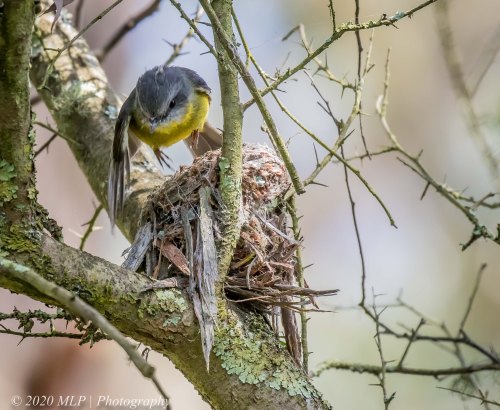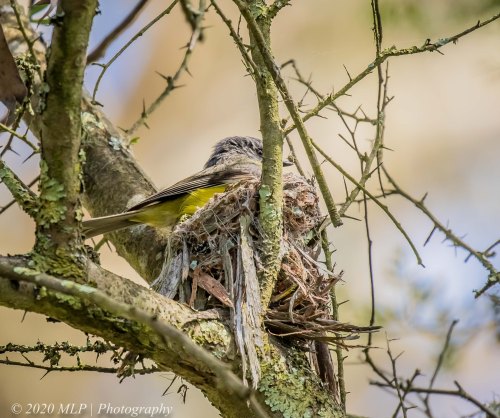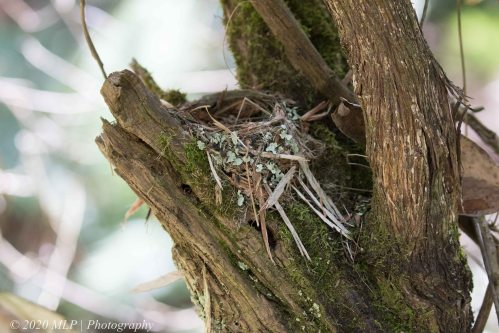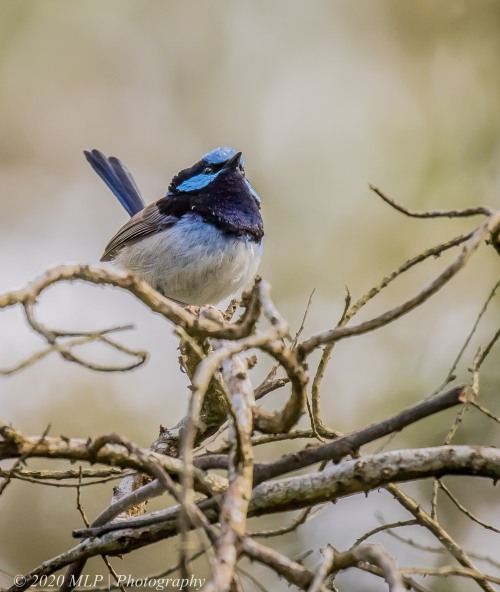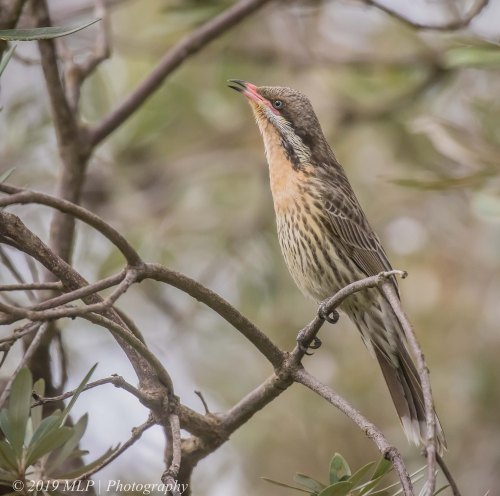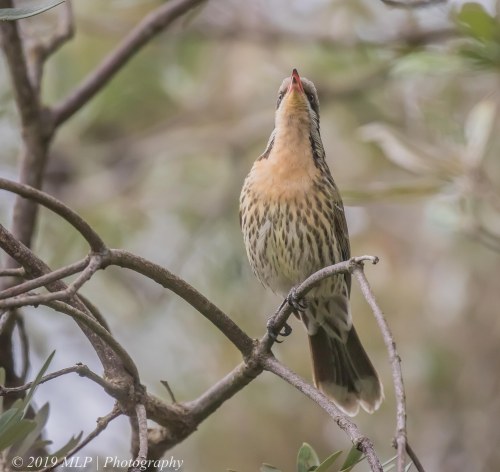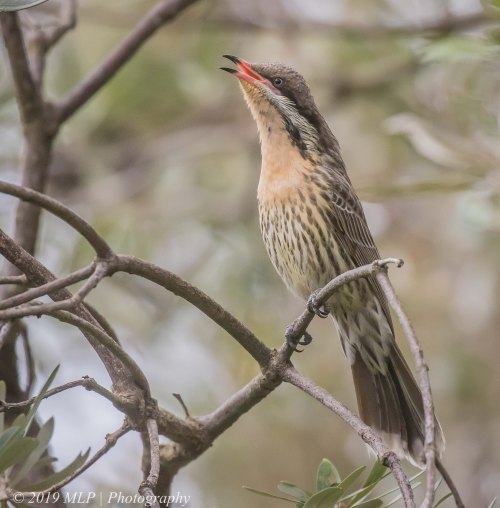While I was standing still and studying the Superb fairy-wrens for the ebird study, I noticed a Yellow Robin flying into a nearby prickly current-bush. I soon found its late season (or second) nest and watched as the Robin made several trips bringing back spider-web and soft materials for the interior of the nest. It would squeeze itself down and shape the bowl.
Later I found another Robin nest carefully placed in the broken fork of a small tree down in a rainforest gully. Unless you stopped and looked at the fork you would never have noticed the nest – it was so well camouflaged with moss and lichen. I must have walked past this nest dozens of times and never saw it or its occupants while it was active.



